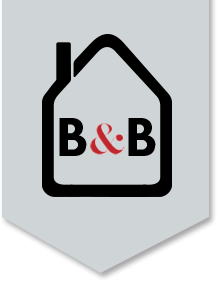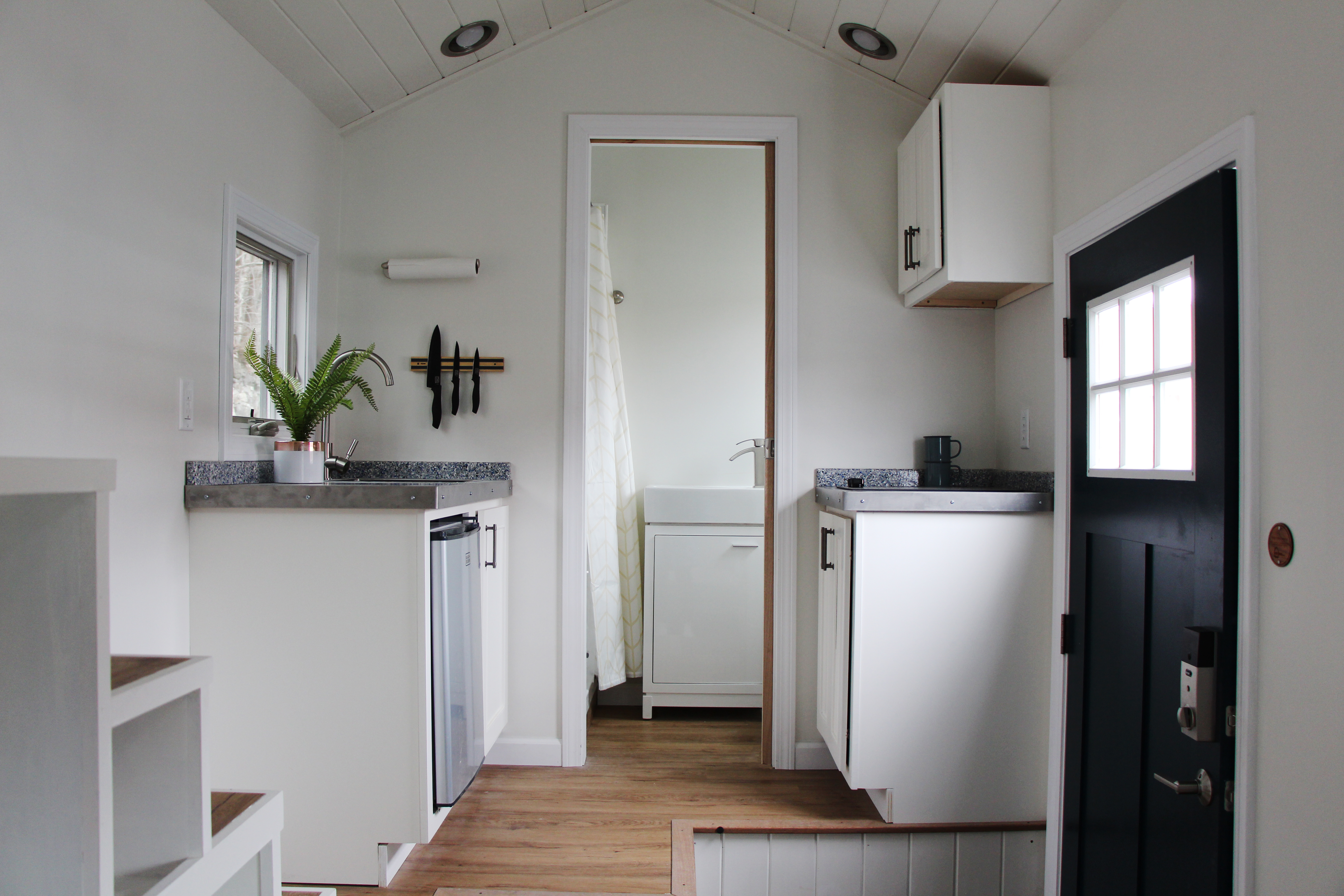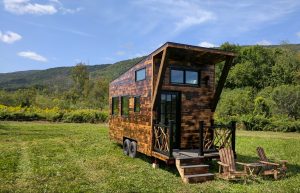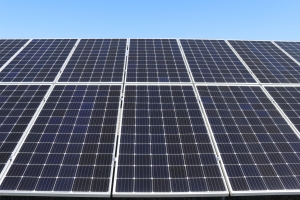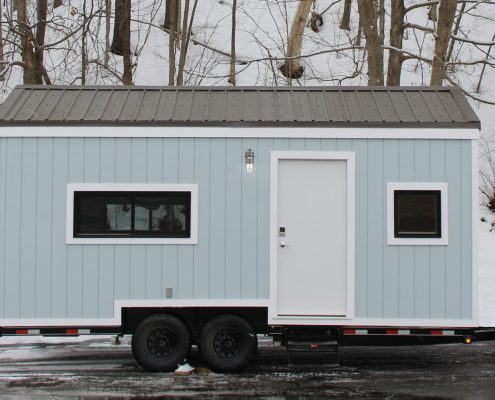Posts
How To Save A Ton of Money on Your Tiny House Build
/in Pricing /by Rick PorcoMany people who want to go tiny do so because it’s a wallet-friendly housing choice. Whether for a primary residence or a vacation home, tiny houses use less materials and less energy over time than traditional single family homes.
Much of saving money on a tiny house build involves understanding the many different options available to you in the tiny house buying process. Here are some points to consider when saving money in your tiny house.

Go with an already-designed tiny house, not a custom design
This is the single greatest money-saving action we can suggest. Custom designs will cost more than a house that’s already in our Signature Designs, and this applies to every step of the process, not just the design phase. Even after the designer’s finished with the blueprints, the builders will need to spend more time on each aspect of the house, since it’s not one they’ve built before. Time is a very large percentage of the final cost, and cutting down on our time spent working through new challenges with a custom tiny house will cut down your overall final cost.
But don’t worry, you can still make your tiny house your own, even if it’s picked out of our catalogue of Signature Models. You’ll be able to choose all the colors, materials, and fixtures for your tiny house.
We offer three options for making your tiny house your own:
CUSTOMIZATION CHOICES, like exterior and interior wall materials, appliances, colors, open shelving versus cabinetry with doors, are always free— these choices will be reflected in the materials and installation cost. These choices don’t require the tiny house designer to change anything about the blueprints of the house.
ALTERATIONS TO OUR EXISTING BLUEPRINTS are $800, which includes two free revisions. Any further revisions are billed at $50 per hour of the designer’s time. The extra build time and materials for an altered floor plan will be built into the quote. Alterations include adding a loft to houses where possible, changing window sizes and locations, designing a custom staircase, and changing the roof shape where possible.
ENTIRELY ORIGINAL DESIGNS are available when we will be building three or more tiny houses; there is a design fee of $2500. This includes two free revisions. Any further revisions are billed at $50 per hour of the designer’s time. The extra time taken to build a custom, rather than a mass-produced, tiny house will be built into the quote. Custom tiny houses generally start at $90,000.
Choose standard materials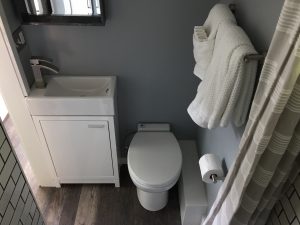
We can build anything you want as long as it’s within the RVIA’s safety standards. One of the owners of B&B Tiny Houses, Mitch, likes to say “we’ll build a slide off the roof” (we haven’t received an order for that one yet)! However, just because we can build something doesn’t mean it’s not going to cost money. Similarly to the previous section on choosing a standard design, choosing standard materials that we already know how to install and that they work well in tiny houses will save us time and save you money.
Our list of common upgrades for our tiny houses doesn’t represent everything we can do and everything we’ve ever built into a tiny house, but it’s a great representation of what upgrades we are comfortable making and already know how to install efficiently. We are happy to research, price, design for, and build with materials or fixtures that aren’t on that list: we’ll just have to build the extra time spent on non-standard materials into the final price. Don’t worry: we think you’ll be very happy finding exactly what you want within that extensive list. Sometimes we even have leftover materials from a previous project that might work well in your house that we can offer you a discount on: we’ll be sure to let you know if so.
Choose inexpensive materials & fixtures from our list
Another way to save money on your tiny house is to go with basic materials. Each tiny house is listed with a starting price. This starting price includes basic materials and fixtures. Here’s a list of our basic materials and what an upgraded material in the same category might be. The difference between tiny houses using all basic materials and tiny houses using all upgraded materials can be quite significant in the final total.
The kitchen shown in this Hoosic tiny house uses all basic materials included in the starting price: a two-burner built-in cooktop, a small kitchen sink, a mini-fridge built into the cabinetry. Of course, you can upgrade this kitchen to include an apartment-size fridge or built in fridge and freezer drawers, a propane stove and oven, a large undermount sink, and a convection oven/microwave (see these features in the Kinderhook tiny house), but this will, of course, cost much more. Being frugal with your appliance choices makes for a great deal of savings in the end.
| Starting Price Includes: | Upgraded Tiny House Might Include: | |
| Exterior | Vinyl Clapboard | Vertical Solid Wood Shiplap |
| Roofing | Asphalt Shingle | Ribbed Metal |
| Interior Walls | Sheetrock | Solid Wood Shiplap |
| Climate Control | In-Wall Electric Heater | Mini Split (Electric Heating & Cooling) |
| Cooking | 2-Burner Glass Cooktop | Stainless Steel 3-Burner Propane Stove/Oven with Range Hood |
| Refrigerator | Mini-Fridge | Apartment Size Fridge (24″ w x 68″ h x 25′ d, 10.1 cu. ft. |
| Dishwashing | Kitchen Sink | Kitchen Sink & Dishwasher (Certain Models Only) |
| Shower/Tub Insert | Vinyl | Custom Tile |
| Bathroom Sink | Mini Sink with Vanity | Mini or Full-Size Sink with Vanity |
| Washer/Dryer | Not Included |
Washer/Dryer Combo (Certain Models Only– Not Available with Solar Power)
|
| Toilet | Your Choice- Inquire For Pricing | Your Choice- Inquire For Pricing |
Choose standard power and water hookups rather than going off-grid
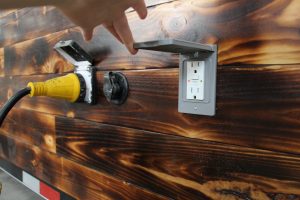
Going off-grid in a tiny house is possible, but the up-front cost isn’t cheap. Likewise, if you’ll want to run electric appliances in your off-grid tiny house, you can, but not as many or as often as you might when you’re on grid. The cost of setting up a solar system capable of running appliances in the same way that one normally might in an on-grid situation can double the cost of the tiny house itself! Running large appliances like a washer/dryer, or many appliances at once, will require large battery storage as well as an array of many solar panels: more that can fit onto the roof of a tiny house.
If you will go with off-grid solar and want to be frugal (or if you’d like to travel with your solar panels), you’ll have to eliminate most electric-run appliances from your list and plan on using other sources of energy, like propane.
The simplest, cheapest power source for your tiny house is running an extension cord and a potable water hose (with heat tape in winter!) from a building that already has power and water. Many people who live in their tiny houses full-time park their houses beside or behind the house of a friend, relative or landlord. Others may lease or purchase a property that already has a power source. The cost of these hookups is included in the starting price of all our tiny houses.
Check out this blog post for more info on how to hook up your tiny house to water and power.
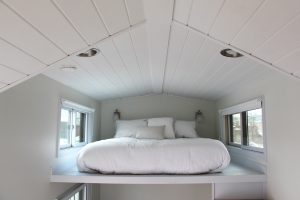
Ready to get started on your tiny house?
Choose your favorite of our Signature Tiny House Models and then get an Instant Estimate for that house with the features and fixtures you want.
When you’re comfortable with your price, contact us to get started.
Tiny House Security
/in Lifestyle /by Rick PorcoHow to Secure Your Tiny House Against Break-Ins and Theft.
A thief would have to be pretty determined to steal a whole house. A tiny house on wheels is a highly visible item and most are custom-built, making it an easily recognizable theft. It’s not the type of thing a thief can slip away with in the night and sell on the internet, never to be seen again. There are only so many places on the internet to sell one, all of which can be monitored to see when the house comes up for sale. Additionally, to transport a tiny house, one can take it on certain roads, but it has to have a license plate, and any tiny house owner can attest that tiny houses on the road generate a lot of buzz.
However, two recent thefts of tiny houses have popped up in the news, reminding us that while rare, it can happen. On that note, it’s important to find a way to secure one’s tiny house and prevent or at least deter thieves from breaking in or stealing it.
The best course of action to ensure your house’s security is having multiple theft deterrents. The idea of theft deterrence is realizing you can’t do everything possible to ensure your house will never get broken into or stolen altogether, but there are many small things you can do to discourage criminal activity. Many thefts are crimes of opportunity: if you make it a difficult and time-consuming for a thief to quietly drive away with your house in tow, they are more likely to pass your tiny house up.
Just a note: we’ve included links to certain products in this article. We aren’t being compensated for posting any of these products and we don’t necessarily recommend or guarantee these exact products: the links are here so you can get a feel for what they are and how they work.
 Trailer Hitch Lock:
Trailer Hitch Lock:
A hitch lock is an easy, quick theft detterent. It can be cut off, but not without spending some time and creating some noise. This will at least slow down a potential house thief, and some have the added benefit of preventing runaway trailers.
There are numerous types of trailer hitch locks, ranging in price from about $17-$45. Here’s a list of reviewed trailer hitch locks from thetoppro.com.
 Wheel Lock:
Wheel Lock:
These work in many different ways, but the one pictured here covers the wheel, rendering it immobile. You can also purchase locks for the lug nuts themselves. Here’s a list of wheel locks from etrailer.com: they range in price from under $10 to $180.
GPS Tracker:
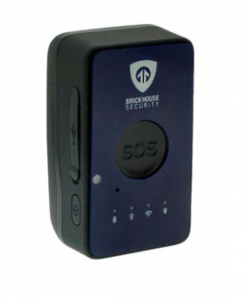 God forbid someone actually gets away with your tiny house, it would be easy to track if you have one of these in or on your tiny house. Hundreds of discreet GPS trackers are on the internet, and many are inexpensive enough to make the purchase worth the peace of mind you’d get from having one. The tracker pictured here, from Brickhouse Security (here are their best GPS trackers), is less than 2″ x 3″, so you can place it inconspicuously so a thief doesn’t know it’s there. You can track its location on your phone or computer.
God forbid someone actually gets away with your tiny house, it would be easy to track if you have one of these in or on your tiny house. Hundreds of discreet GPS trackers are on the internet, and many are inexpensive enough to make the purchase worth the peace of mind you’d get from having one. The tracker pictured here, from Brickhouse Security (here are their best GPS trackers), is less than 2″ x 3″, so you can place it inconspicuously so a thief doesn’t know it’s there. You can track its location on your phone or computer.
Security Camera:
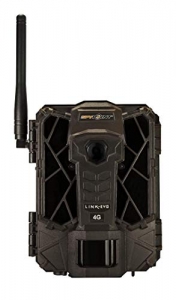
As the economy forces package thieves to become bolder and bolder, the market for home security has exploded, and security cameras are getting cheaper every year. Even if your security camera doesn’t prevent the most determined thief, it is certainly a theft deterrent. Some security cameras use motion detection to start recording a ten-second video; others record all the time.

Security cameras that store the images and/or video inside them are only helpful after you recover the camera itself. A smarter choice is either a wifi-connected home security camera like Arlo or Nest, or a trail cam, which operates on cell data (you’ll have to pay monthly). Both a wifi-connected cam (here are PC Mag’s top picks for 2019) or a trail cam (here are Trail Cameras’ Reviews for 2018) allow you to see the images in near-real-time on your phone or computer.
Smart Home Security System:
 If a security camera isn’t enough, you can have a whole integrated security system in your tiny house, as long as your house gets constant power. Smart home security systems like Honeywell’s allows you to choose a la carte what features you’ll use, such as notifications when windows or doors are opened, motion light activation, facial recognition of those entering your house, and voice control with Amazon Alexa.
If a security camera isn’t enough, you can have a whole integrated security system in your tiny house, as long as your house gets constant power. Smart home security systems like Honeywell’s allows you to choose a la carte what features you’ll use, such as notifications when windows or doors are opened, motion light activation, facial recognition of those entering your house, and voice control with Amazon Alexa.
(Full disclosure– Honeywell’s not paying us to post this, but we did build a tiny house for them integrating their smart home tech, so we’re familiar with their technology and we like their brand).
Timed Lights:
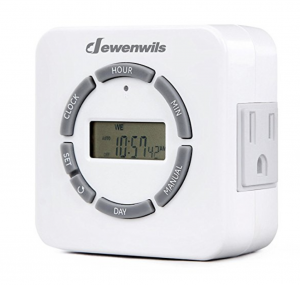

These lights are great for when you’re not at home but want to give the impression that someone is there.
The simplest and cheapest option is a light timer, which can either be plugged into a wall socket (this one’s by Dewenwills, pictured at left) or integrated into the light switch plate (this one’s by Honeywell, pictured at right). It turns a lamp or electric outlet on and off at a specific time or times every day. The mechanical ones make a clicking sound that will drive you nuts in a small space, so we recommend an electronic light timer.
Motion-Sensor or Remote-Controlled Lights:

Most people have been familiar with motion sensor lights for decades. Not only can they be a theft deterrent by attracting attention to the house when there’s movement, they can also increase the security of the tiny house dweller when coming home and fumbling for keys in the dark. Here’s The Spruce’s list of best motion sensor lights for different outdoor areas. Some of these contain the sensor within the bulb, so the bulb can be screwed directly into any light socket, which means you won’t have to do any wiring to make them work. Some of the lights on this list run on their own solar power which is nice for when your tiny house isn’t connected to a power system.
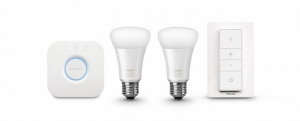
Like timed lights, remote controlled lights help create the illusion that someone’s home, but they’re a bit “smarter” in terms of going on either when they sense motion or when you decide to activate them from afar via your electronic device. Remote-controlled smart lights, for when you’re far away to your wifi-connected tiny house, allow you to turn on a light in your home via an app on your phone. Here are a couple ways to integrate smart lights from Make Use Of, whether your house hasn’t been built yet and you can install these during the building process, or you’d like to install plug-and-play smart lights in your exisiting tiny house. You can also get remote control of the lights in your tiny house by incorporating them into your existing smart home security system.
Neighbors:
 This one’s pretty simple: although not all tiny house owners are parked near neighbors, those who are and have a friendly rapport with them can ask their neighbors to keep an eye on their tiny house. Having possible witnesses close by is a major deterrent to break-ins and thefts.
This one’s pretty simple: although not all tiny house owners are parked near neighbors, those who are and have a friendly rapport with them can ask their neighbors to keep an eye on their tiny house. Having possible witnesses close by is a major deterrent to break-ins and thefts.
(Pictured: The Hoosic Tiny House flanked by two other tiny houses. Photo by Try It Tiny)
Location and Recognition:
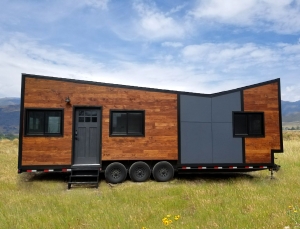 When choosing a location for your tiny house, from a theft deterrent standpoint, consider how easy it is for someone to get away with your tiny house. Anyone who’s ever towed a tiny can attest that tiny houses attract a lot of attention on the road. People peer out of their windows, take photos, post them on the internet. Whether you want to attract attention or not, it’s like being in a single-float parade.
When choosing a location for your tiny house, from a theft deterrent standpoint, consider how easy it is for someone to get away with your tiny house. Anyone who’s ever towed a tiny can attest that tiny houses attract a lot of attention on the road. People peer out of their windows, take photos, post them on the internet. Whether you want to attract attention or not, it’s like being in a single-float parade.
Likewise, if your tiny house is easily recognizable, it’s more easily recovered. An unusual looking tiny house can’t go as far and long without being reported.
Tiny House Anchoring:
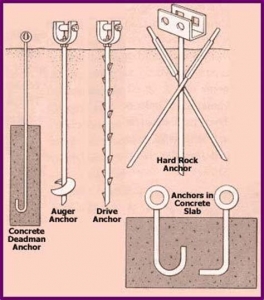 For those who do not travel with their tiny house, tie-downs aren’t just a good idea for theft deterrence. They’re also a great idea to keep the house from rocking or even lifting during a hurricane. Although one can remove the house from the anchors (with varying degrees of difficulty depending on which type of anchor you’re using), this takes time and is another way to deter theft.
For those who do not travel with their tiny house, tie-downs aren’t just a good idea for theft deterrence. They’re also a great idea to keep the house from rocking or even lifting during a hurricane. Although one can remove the house from the anchors (with varying degrees of difficulty depending on which type of anchor you’re using), this takes time and is another way to deter theft.
Additionally, building a porch onto the front of your tiny house not only expands your livable space in nice weather and creates a more welcoming entrance, it makes it more difficult for a thief to quickly steal your tiny house.
Tie-in to septic and sewer:
 Like anchoring with tie-down straps, it’s not impossible to remove a septic or sewer tie-in, but it takes longer, requires tools and knowledge which means it takes longer to steal someone’s house. Of course, not all tiny houses stay in one location– they are on wheels, after all– but for those that do, this is a great option.
Like anchoring with tie-down straps, it’s not impossible to remove a septic or sewer tie-in, but it takes longer, requires tools and knowledge which means it takes longer to steal someone’s house. Of course, not all tiny houses stay in one location– they are on wheels, after all– but for those that do, this is a great option.
Image from My Camper Home on Youtube
Remove tires:
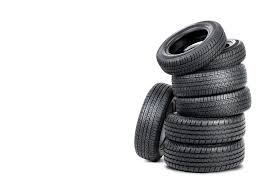 When the tires are removed, a thief can’t just hook up a tiny house to their truck and roll away with it. It takes time and tools to attach four or six tires to the wheels of a trailer: time that exposes a thief to witnesses.
When the tires are removed, a thief can’t just hook up a tiny house to their truck and roll away with it. It takes time and tools to attach four or six tires to the wheels of a trailer: time that exposes a thief to witnesses.
You can’t say for certain that your tiny house will never be broken into or stolen. However, the chances of that are very slim; you can make them slimmer by taking some of these simple precautions.
Quiz: Which Tiny House is Right For You?
/in B&B Products /by Rick PorcoWe know: there are so many beautiful designs to choose from and the choices can get overwhelming! Which is the best tiny house for you?
Click each answer that’s the best fit for you: there are no wrong answers!
What's your approximate budget?
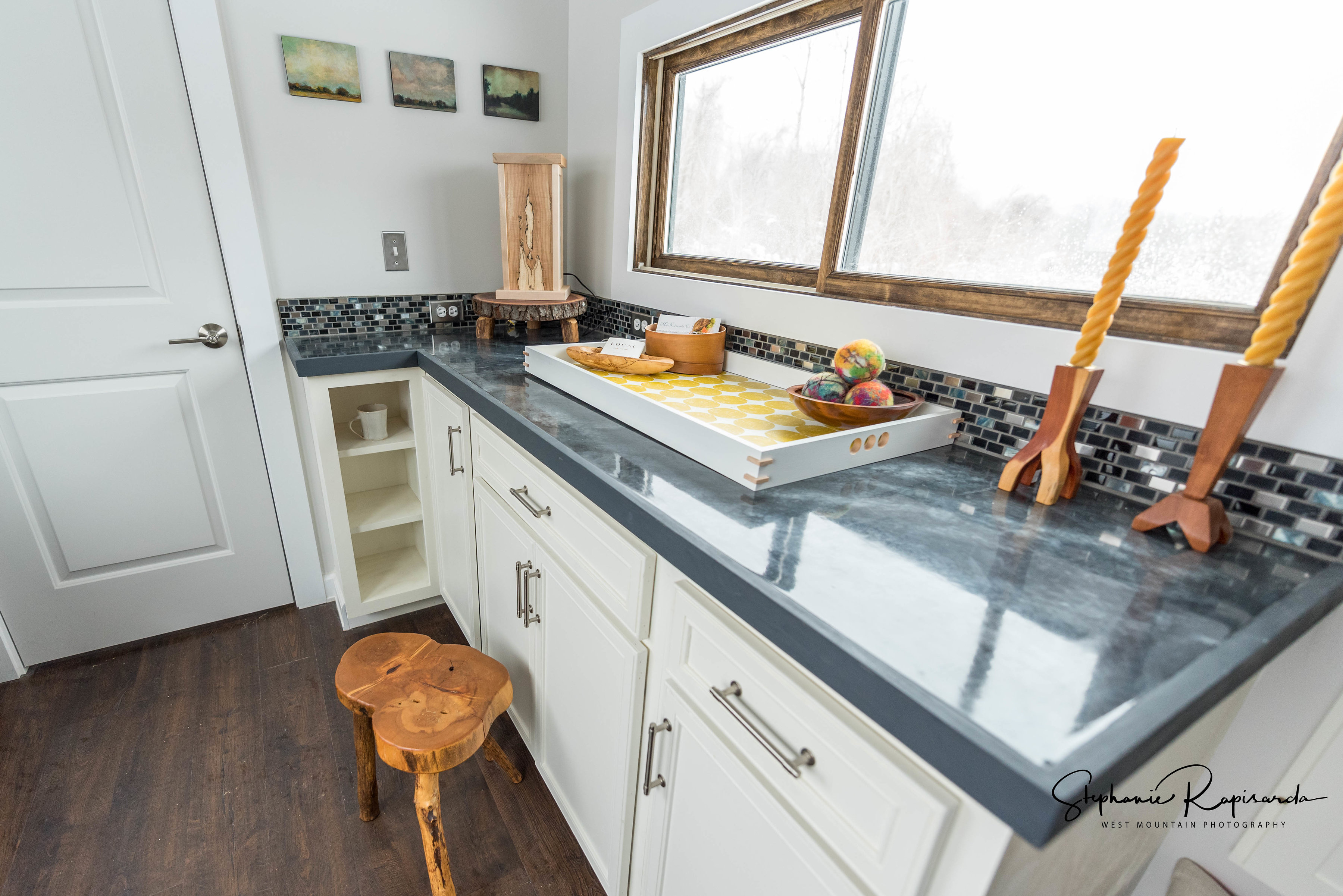
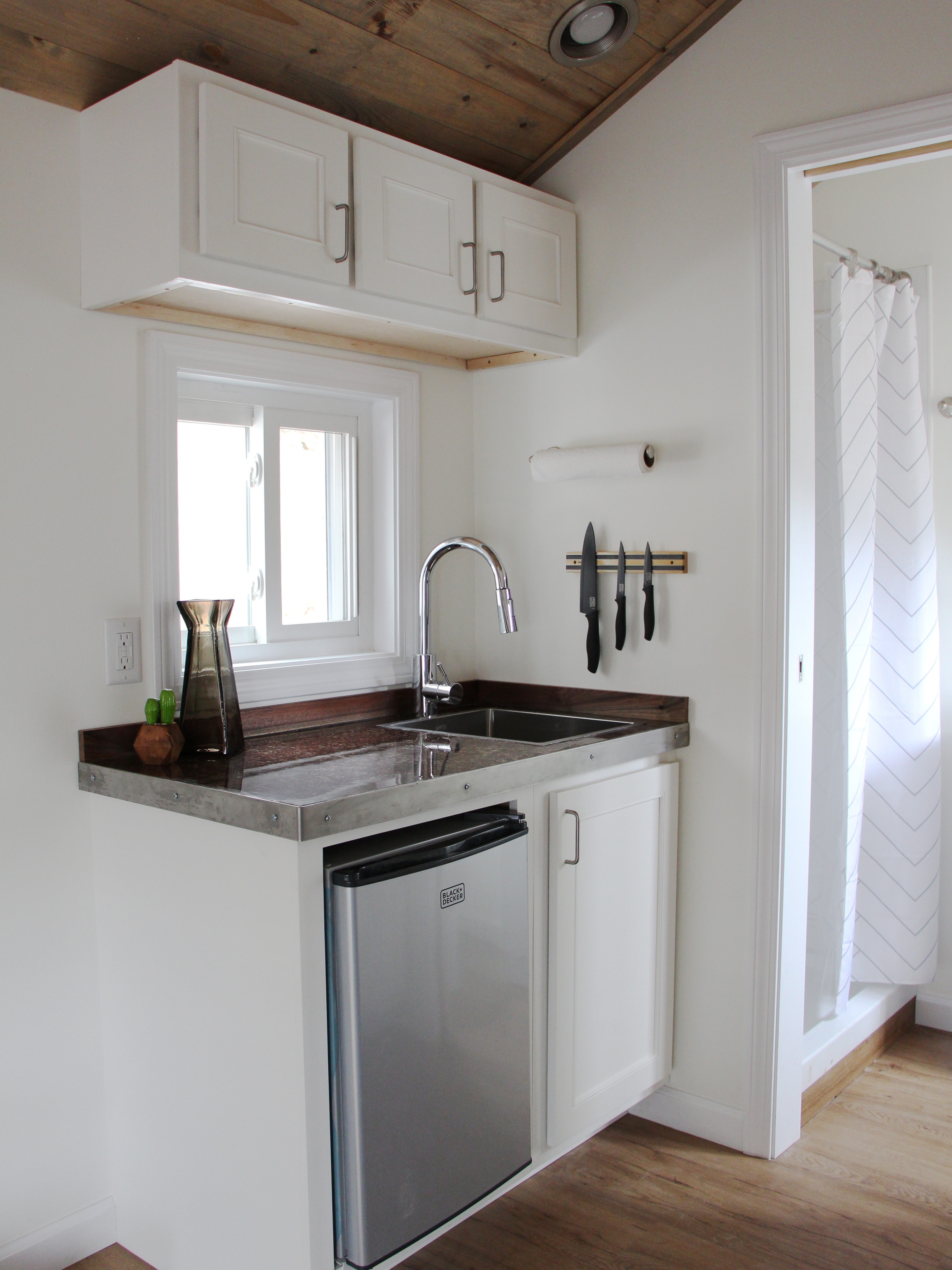


Tow it yourself or have us deliver?
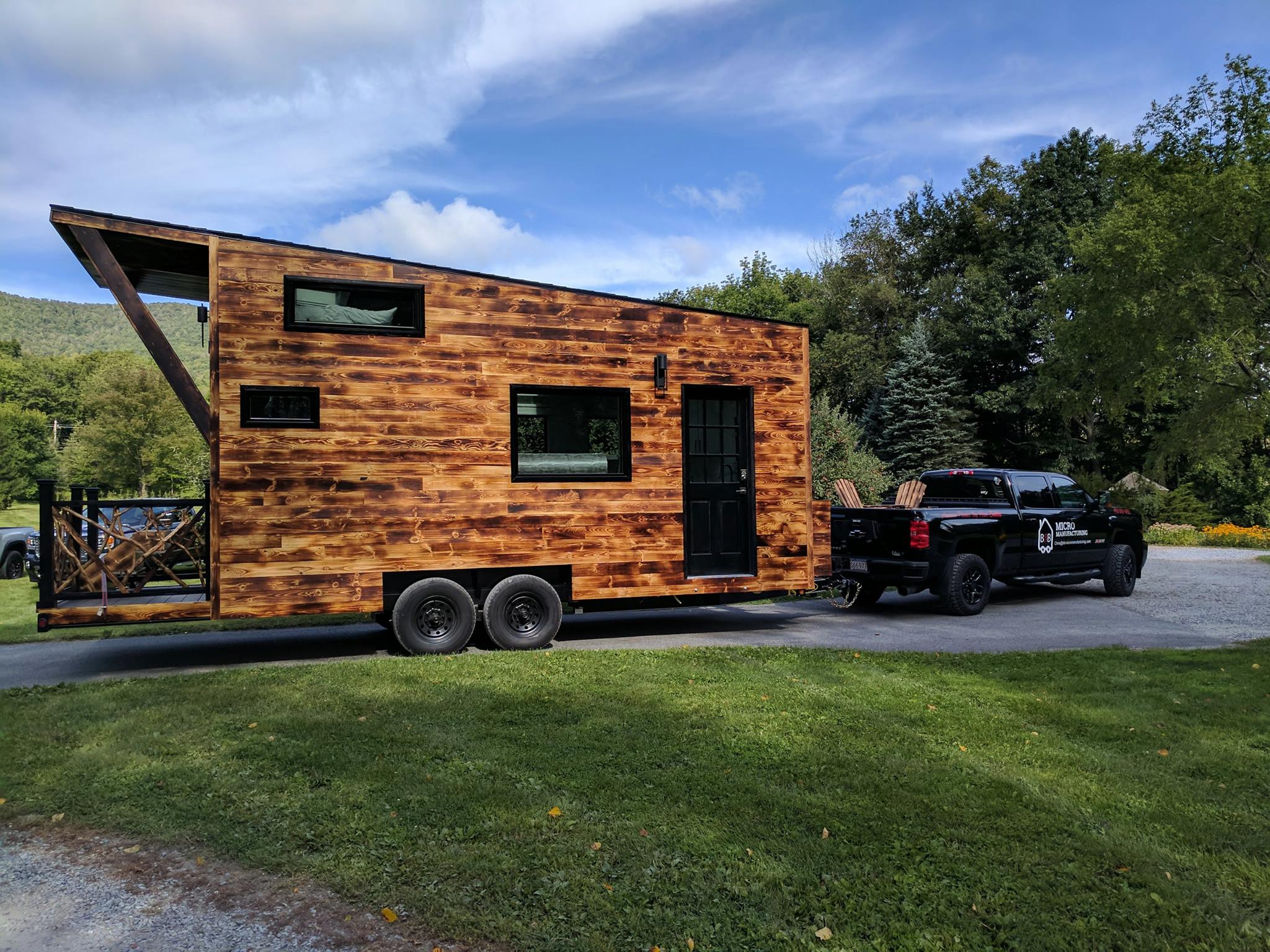

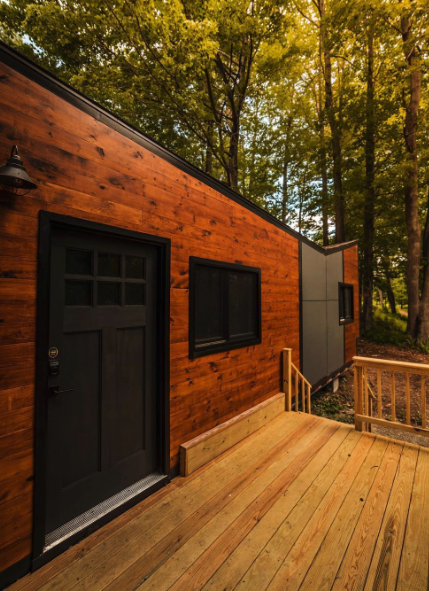
Which master bed configuration is your favorite?

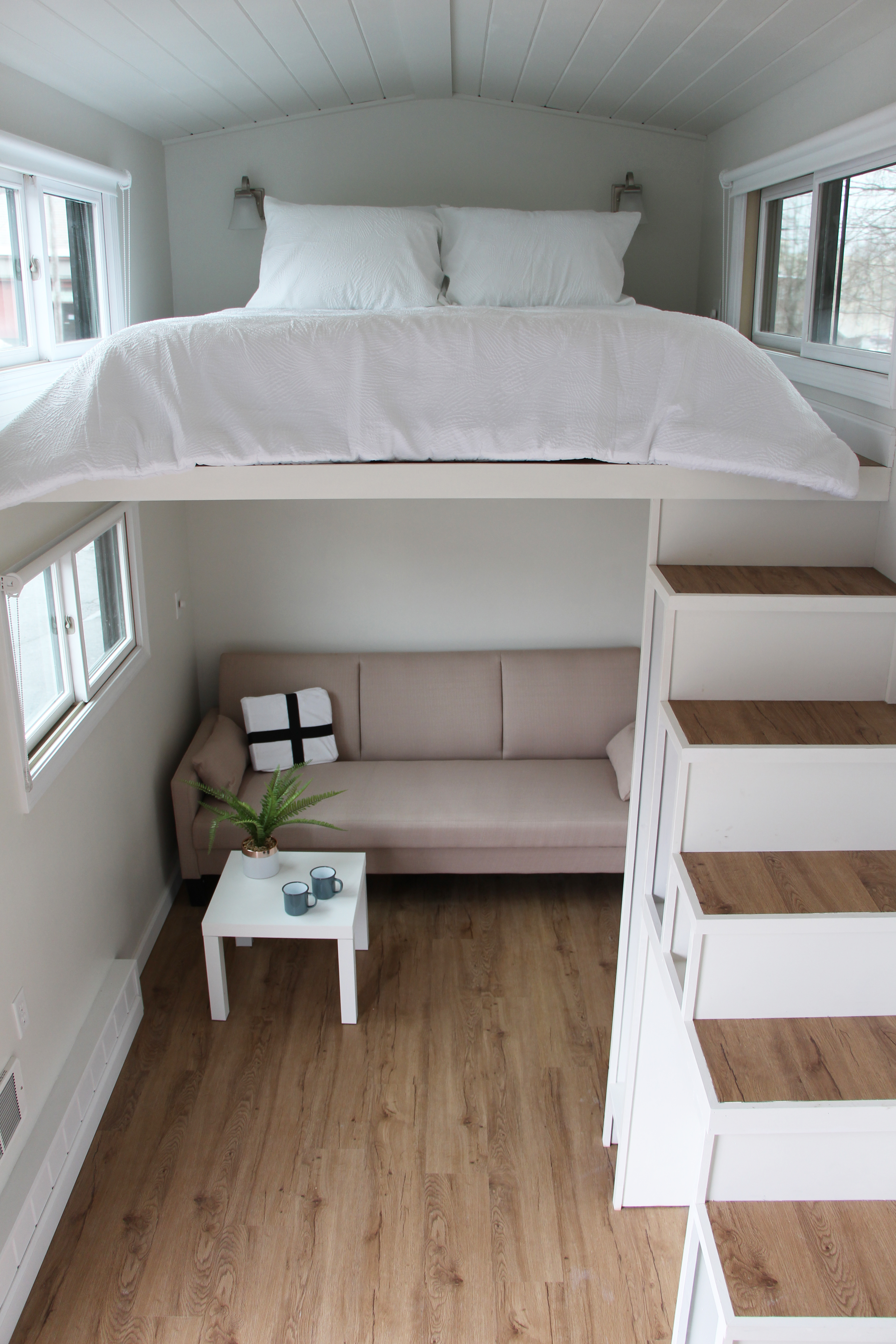

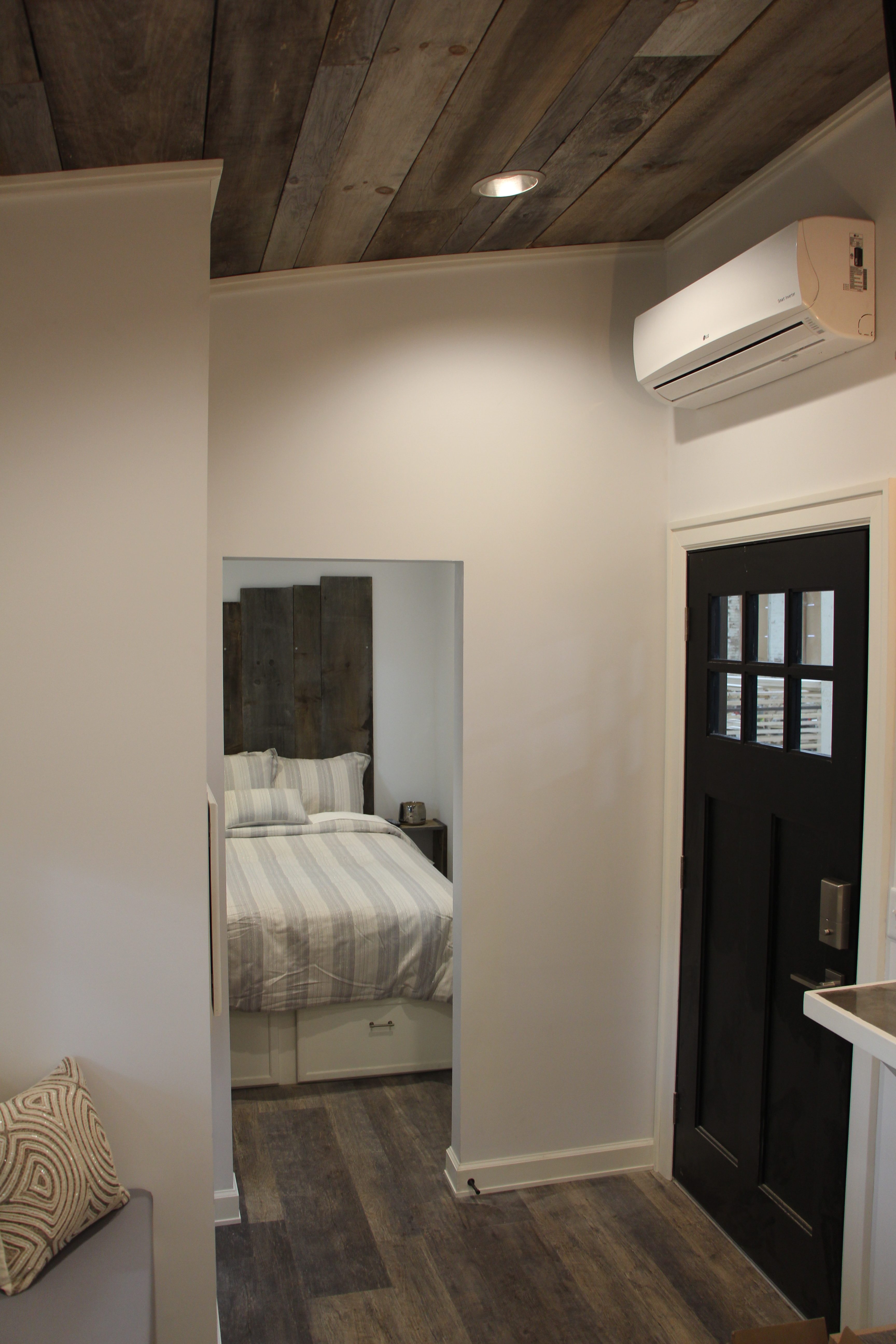
How many people will be sleeping in your tiny house?
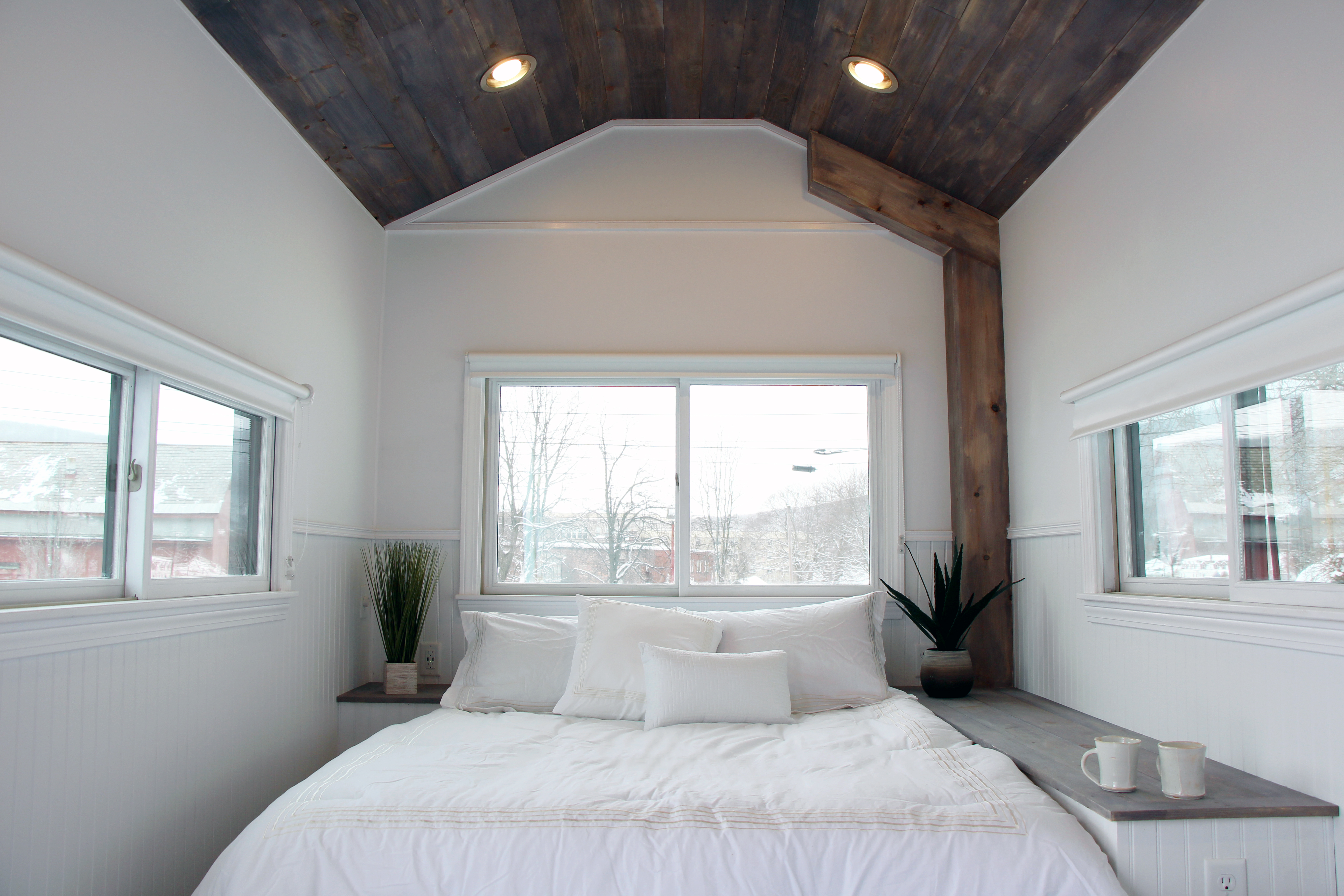

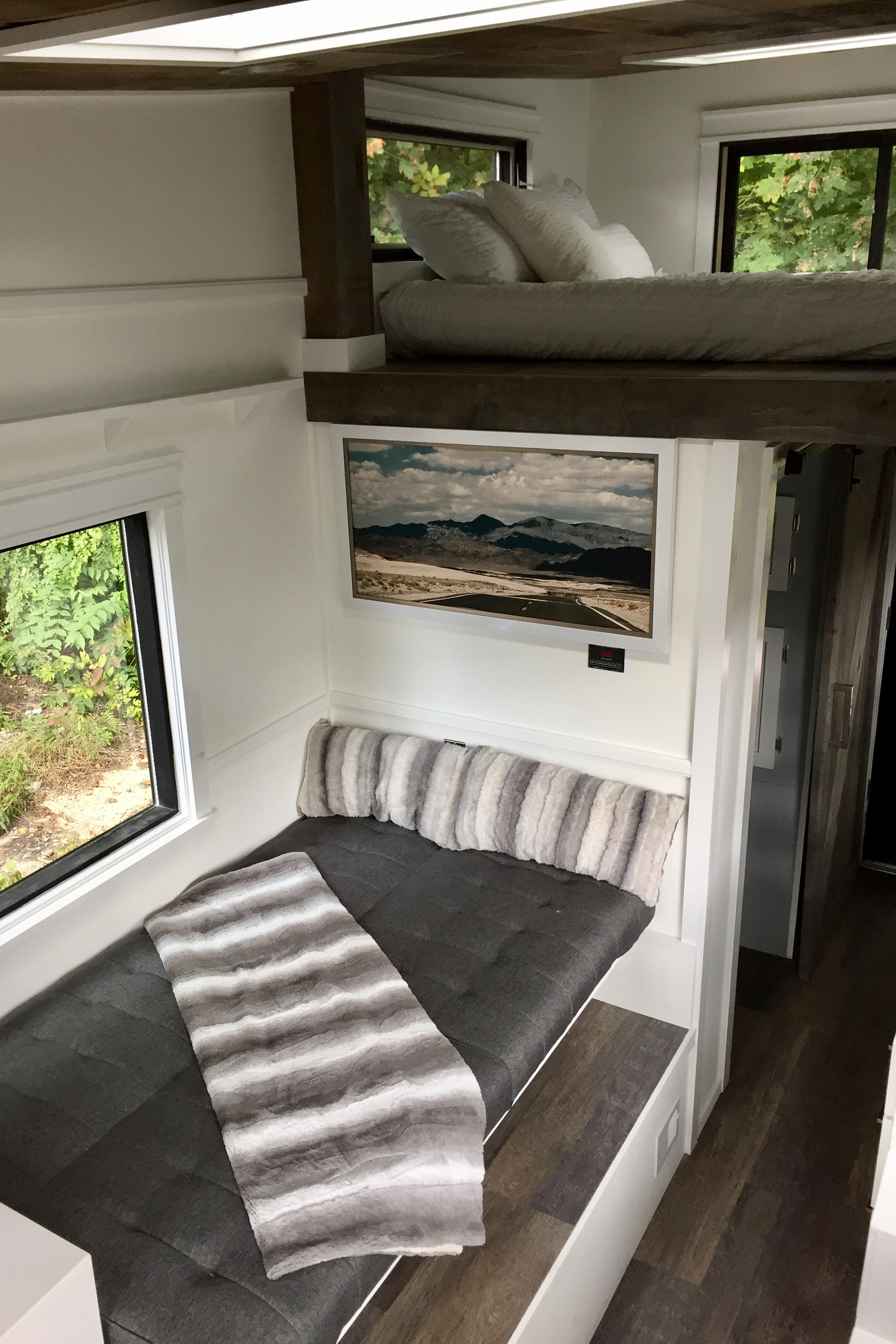
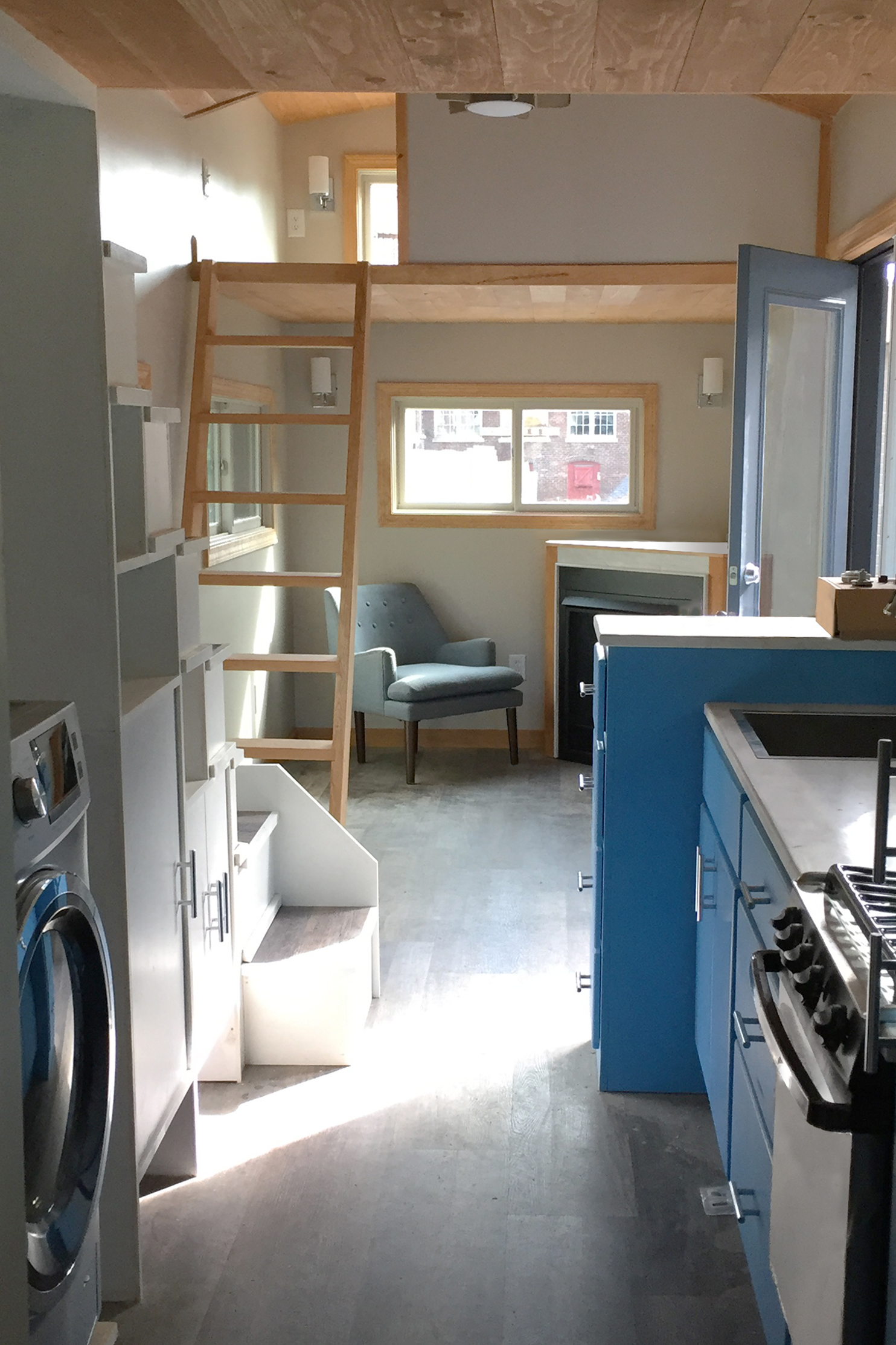

For another tiny house with a first-floor bed, you might also want to check out The Taconic, & for another tiny house that's lightweight for towing, the Hoosic.
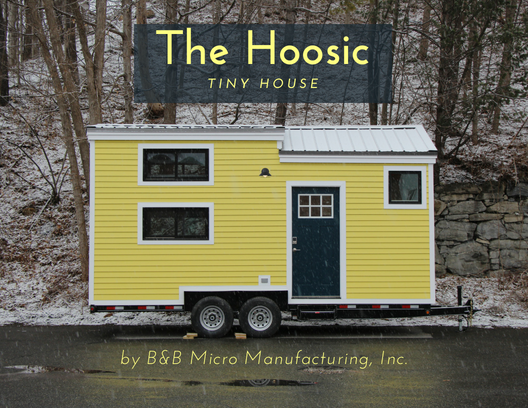
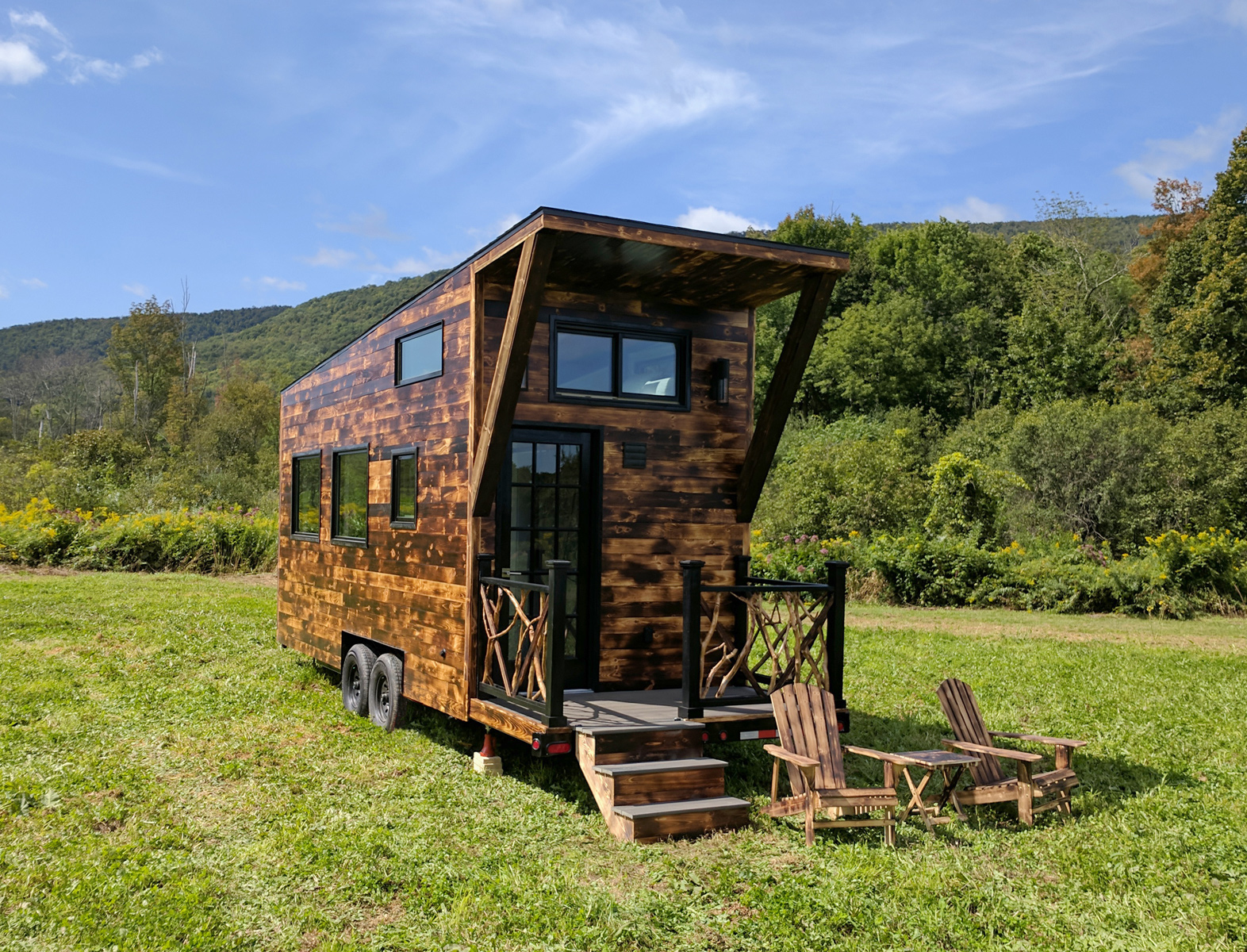
For another tiny house that can sleep four (two in the loft and two on a sofabed), you might also want to check out The Hoosic, & for another tiny house with a beautiful full kitchen, the Stony Ledge.
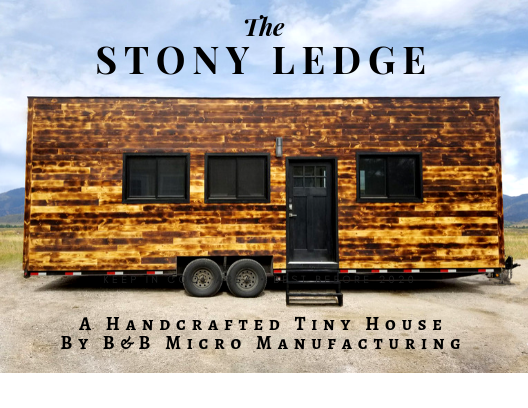
For another tiny house that has a full kitchen, first-floor sleeping and a bathtub, you might also want to check out The Ashmere, & for another tiny house with all the above features but two lofts instead of a downstairs bedroom, the Cold Spring.

For another tiny house with a full kitchen and no loft, you might also want to check out The Ashmere, & for another tiny house with a beautiful full bathroom and separate, first-floor bedroom, the Stony Ledge.
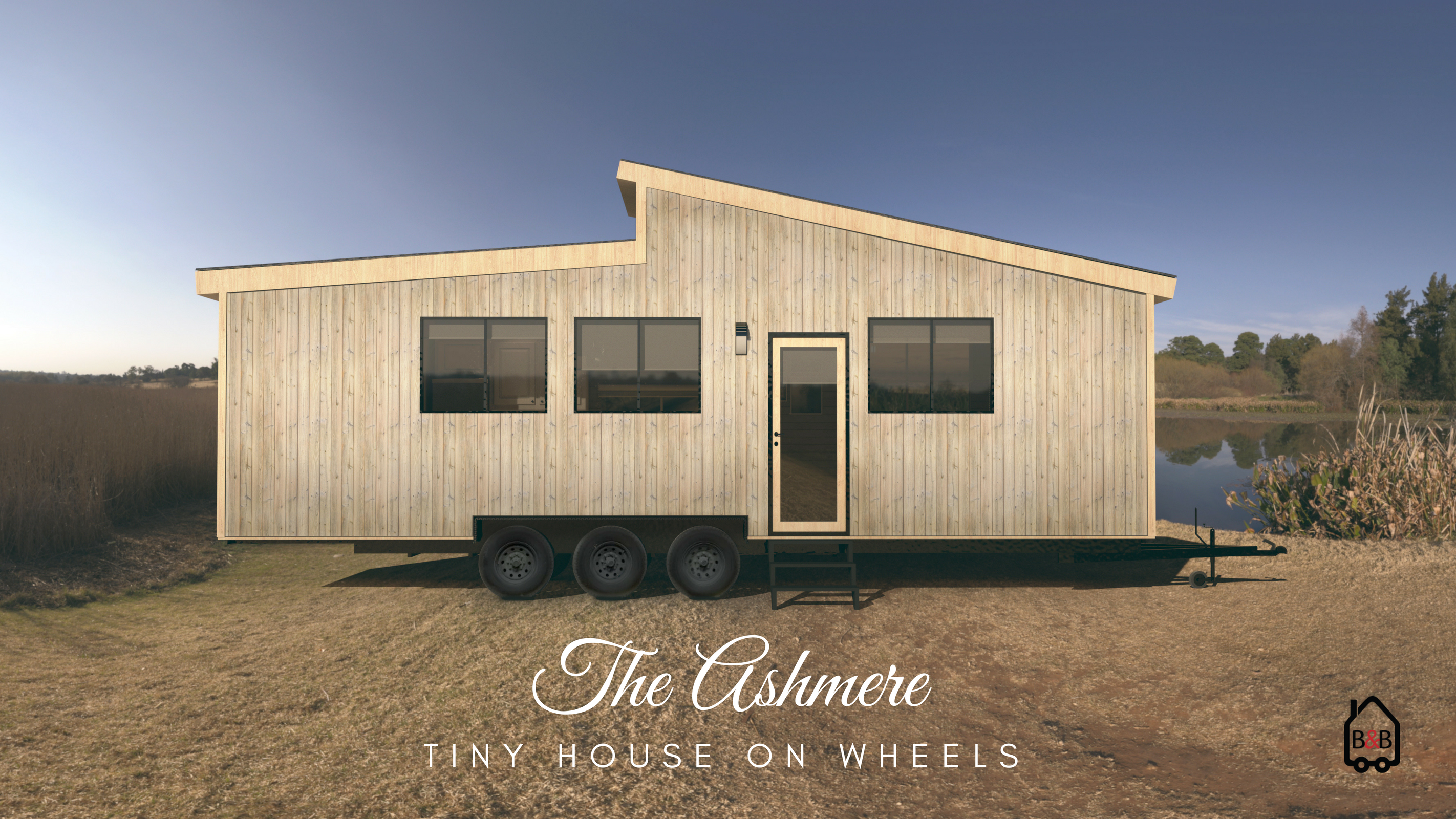
For another tiny house that has its bed on the ground floor, you might also want to check out The Hudson, & for another tiny house with a full kitchen and full bath, the Stony Ledge.

For another "large tiny house", you might also want to check out The Kinderhook, & for another tiny house with a full kitchen and full bath, the Stony Ledge.
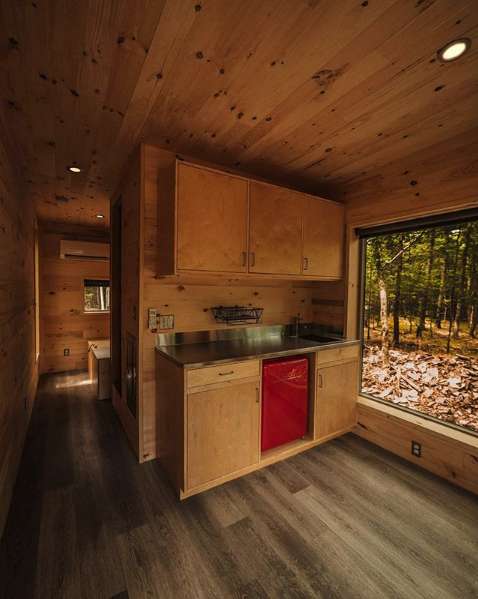
For another tiny house with modern design, you might also want to check out The Silver Lake, & for another extra-wide tiny house, the Kinderhook.
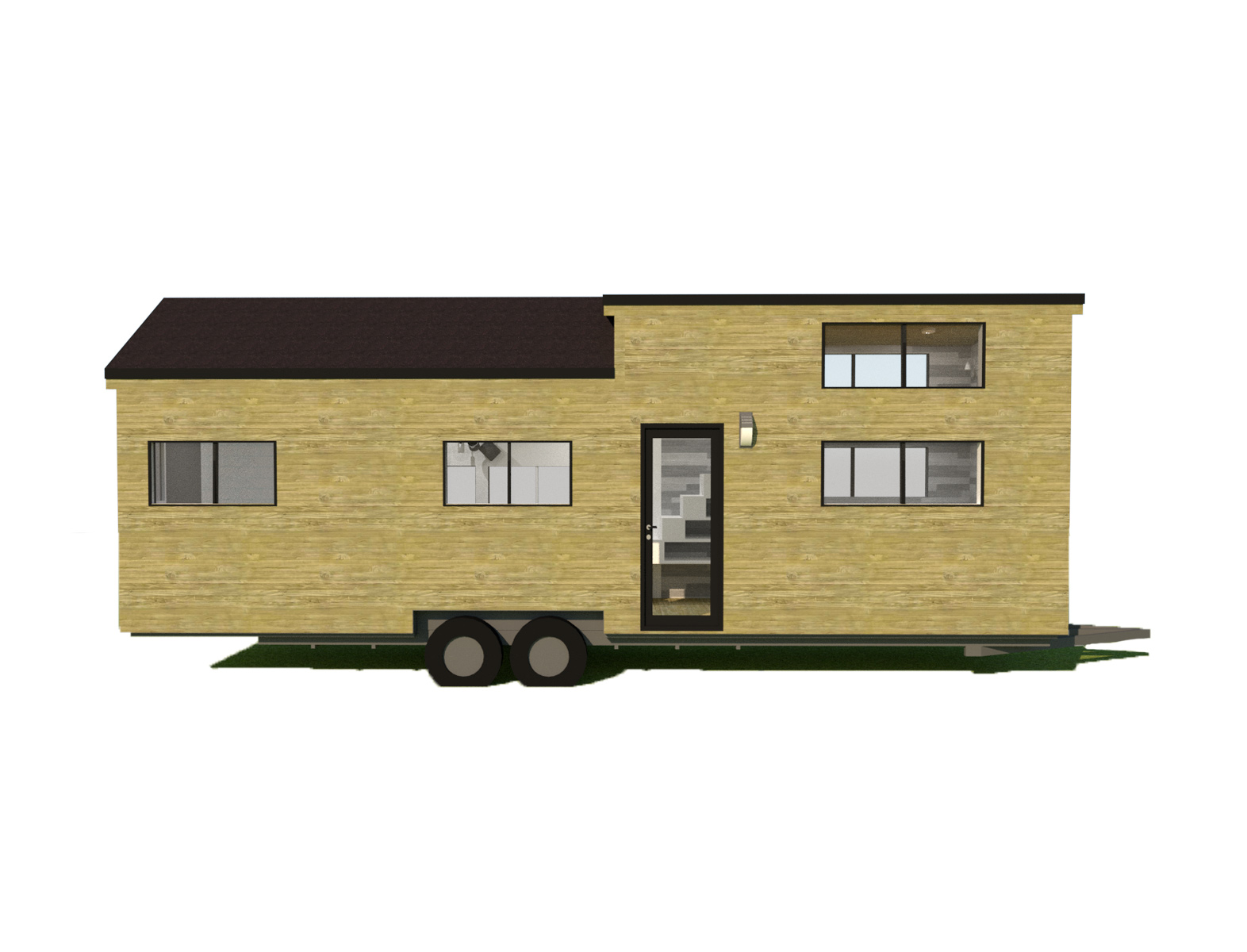
For a miniature version of the Kinderhook that's lightweight for towing, you might also want to check out The Hoosic, & for another extra-wide tiny house, the Taconic.
Share your Results:
The 8 Steps To Buying A Tiny House: Everything You’ll Need To Do To Go Tiny
/in Pricing /by Rick PorcoYou’ve been dreaming about your very own tiny house for years. Are you ready to take the leap?
Here are all the steps you’ll take in the tiny house buying process.
Choose a tiny house site.
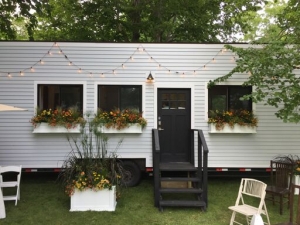 For some this is easy: a backyard, a piece of property in a town that allows RVs, or an RV park. For those who don’t yet know where to put their tiny house, finding a location to put their tiny house is a crucial step. We’ll build your tiny house differently depending on whether you plan to travel often with your house or it’ll stay in one place. There are many different customization options available for your tiny house, which often depend on what kind of utilities are available at your tiny house site.
For some this is easy: a backyard, a piece of property in a town that allows RVs, or an RV park. For those who don’t yet know where to put their tiny house, finding a location to put their tiny house is a crucial step. We’ll build your tiny house differently depending on whether you plan to travel often with your house or it’ll stay in one place. There are many different customization options available for your tiny house, which often depend on what kind of utilities are available at your tiny house site.
You’ll need to make sure your site has an access road and enough room for a truck to deliver the tiny house. If you send us the layout of your property we’ll help you determine the best spot to place your tiny house during your design session.
Here’s a blog post on where to put your tiny house, and what to know if you’re thinking of buying land for your tiny house.
One way to find a location is through networking. Here’s a list of tiny house networking sites: most of these groups are through Facebook or Meetup.
If you’re finding it difficult to find a town that already allows tiny houses, you’re not alone. In fact, most towns’ Planning/Zoning Boards haven’t even considered whether to allow tiny houses on wheels: all it’ll take to start the wheels turning (pun intended, sorry) is for someone to ask. The American Tiny House Association (Website, Facebook) is a great resource for those who would like to ask for permission to live in their tiny houses.
Choose a tiny house model.
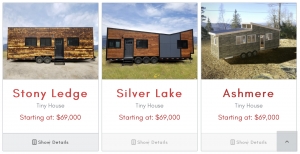 Know where you’ll put your tiny house? Great! Browse our tiny house catalogue online and decide which model is the best for you. Each of our models is customizable: customizations like materials and paint colors are free, while having our designer change the blueprints is an extra fee.
Know where you’ll put your tiny house? Great! Browse our tiny house catalogue online and decide which model is the best for you. Each of our models is customizable: customizations like materials and paint colors are free, while having our designer change the blueprints is an extra fee.
Some of our tiny houses are the road-legal limit of 8 1/2′ wide. If you’re looking for a tiny house you can tow with you, check out our Lightweight Models for Towing. We also offer Park Model Tiny Houses at 10′ wide, the Taconic and the Kinderhook. Park Models are great when you want a little extra elbow room and don’t plan to move your tiny house after it’s put in place.
Don’t want to climb up a ladder to go to bed? Click here to see our models with a first-floor bed.
Get your finances ready.
 B&B’s Tiny Houses on wheels are inspected by the Recreation Vehicle Industry Association, or the RVIA. Your tiny house will come with an individual seal showing it’s been certified. Because they’re certified to RVIA standards, our tiny houses are legally considered RVs, and can get RV financing, insurance, and access to RV parks. Having this certification also helps when explaining to your town’s Planning and Zoning Board exactly what a tiny house is and how it’s certified.
B&B’s Tiny Houses on wheels are inspected by the Recreation Vehicle Industry Association, or the RVIA. Your tiny house will come with an individual seal showing it’s been certified. Because they’re certified to RVIA standards, our tiny houses are legally considered RVs, and can get RV financing, insurance, and access to RV parks. Having this certification also helps when explaining to your town’s Planning and Zoning Board exactly what a tiny house is and how it’s certified.
If you’ll use financing, down payments differ based on the financial institution, but they’re generally between 20 and 25%. If you’ll pay cash, we generally charge 60% up front and 40% when the house is complete. You’ll need to have this amount saved before you buy a tiny house.
To find out about how much the tiny house you want would cost, try our Instant Estimate Generator. This will give you a ballpark estimate so you’ll know how much to save. If you’re not comfortable with your first estimate, you can go back through the Estimator as many times as you’d like, choosing different options. Here are some suggested financial institutions for getting RV financing for your tiny house.
Keep in mind that the cost of the tiny house itself isn’t the only expense you may have when placing a tiny house. Depending on your site and what your municipality requires, you may need to have utilities connected, a gravel or concrete pad poured, and anchors installed. If you’re not towing your tiny house yourself, you’ll need to pay about $2 per mile for delivery (we’ll connect you with our trusted delivery company). It’s important to factor in the all-in cost of buying a tiny house before paying a deposit.
Schedule a tiny house design session.
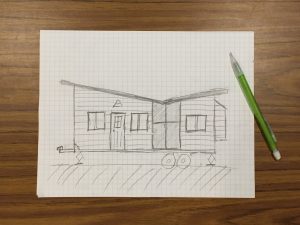 Whether you’d like to make changes to the blueprints of the tiny house or not, a design session is the next step. If the only design changes are your selections for colors, materials and fixtures, these choices are free to make; the cost of the materials you choose will be reflected in your final quote. If you’ll make changes to the blueprints, we charge a Design Alteration fee before our design session (scroll down past the customization options to see the fee).
Whether you’d like to make changes to the blueprints of the tiny house or not, a design session is the next step. If the only design changes are your selections for colors, materials and fixtures, these choices are free to make; the cost of the materials you choose will be reflected in your final quote. If you’ll make changes to the blueprints, we charge a Design Alteration fee before our design session (scroll down past the customization options to see the fee).
Contact us to set up a time for a design session, whether via Skype, phone, or in-person. If your session is in person, we’ll walk you through any tiny house that we may have at our shop so you can get a feel for the space. During our design session, we’ll go through, in detail, which options you’d like, and the pros and cons of each depending on your location and how you’ll be using your tiny house. You’ll have a chance to get your tiny house questions answered as well as learn more about which options are realistic for your living situation.
We’ll create a quote for you and send you a contract.
 After your design session, our team will create a quote for your tiny house. If you need changes to the existing plans, we’ll create a new drawing: this can take a few weeks depending on our design pipeline.
After your design session, our team will create a quote for your tiny house. If you need changes to the existing plans, we’ll create a new drawing: this can take a few weeks depending on our design pipeline.
We’ll review your quote and final customization plan (your choices for colors, materials, fixtures, etc.) with you.
When you’re ready to finalize your choices and move forward, we’ll send you a build contract.
When we receive your signed contract and first payment (if you’re paying with cash, 60%; if you’re financing, we’ll need the payment from your financial institution) we’ll start ordering materials for your tiny house.
We’ll build your tiny house.
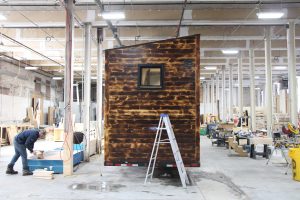 Our build schedule varies throughout the year: sometimes we can start building a tiny house right away, and other times there will be other projects in the pipeline. We’ll be sure to keep you updated on our build schedule.
Our build schedule varies throughout the year: sometimes we can start building a tiny house right away, and other times there will be other projects in the pipeline. We’ll be sure to keep you updated on our build schedule.
Trailers take about five weeks to build; your tiny house, depending on its size and level of complexity, should take 6-12 weeks after that depending on our build schedule. We’ll keep in touch with you during the build process.
Get your site ready.
 The needs of tiny house sites vary greatly. If you’ll be traveling with your tiny house and parking it at RV Parks, there’s not much you’ll need to do other than reserve your spot. If you’ll be keeping your tiny house in one place, you’ll need to make sure you can get water and power to your tiny house and waste water away from it. Depending on the permanency of your tiny house, you may want to have a gravel or concrete pad poured, and lay water and electric lines. If you’re going solar, you’ll need to contract with a solar company to have your panels installed on your site.
The needs of tiny house sites vary greatly. If you’ll be traveling with your tiny house and parking it at RV Parks, there’s not much you’ll need to do other than reserve your spot. If you’ll be keeping your tiny house in one place, you’ll need to make sure you can get water and power to your tiny house and waste water away from it. Depending on the permanency of your tiny house, you may want to have a gravel or concrete pad poured, and lay water and electric lines. If you’re going solar, you’ll need to contract with a solar company to have your panels installed on your site.
Pick up your tiny house at our shop or have it delivered to your site.
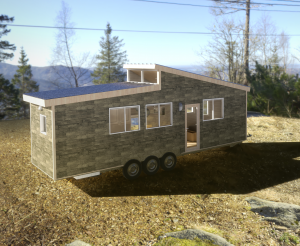 If you’ll be towing your tiny house, here’s a primer on what size vehicle you’ll need.
If you’ll be towing your tiny house, here’s a primer on what size vehicle you’ll need.
Those who do not plan to tow their own tiny house may have it professionally delivered to their site. Contact us for a delivery estimate. We’ll schedule a time with you to ensure you’re on-site when your house is delivered, and we’ll answer any questions you might have about setting it in place.
Ready to choose a tiny house model? Check out our Tiny House Designs and then get an Instant Estimate.
Have Questions? Contact us.
Comparing the True Cost of a Tiny House Versus a Traditional House
/in Pricing /by Rick PorcoTiny Houses at first glance are much cheaper than traditional houses. However, let’s take a closer look at the costs involved in tiny house living versus traditional house living.
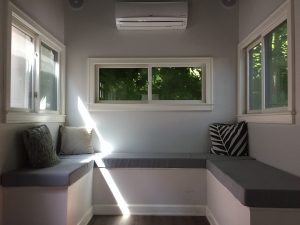
The cost to build a tiny house is more per square foot, but less overall.
Why? Tiny houses are smaller. The cheapest square footage in any home, whether tiny or not, is empty space. The most expensive space per square foot in a home is the kitchen and bathroom, which have appliances installed that need electricity and plumbing. A tiny house on wheels still has all the appliances and fixtures: a toilet, shower, and sink in the bathroom, and a fridge, sink, and cooking device in the kitchen, just like a “big house”; what we’re eliminating when building tiny is the cheapest space: empty floor space. That’s why the cost per square foot is higher in a tiny house.
However, in a tiny house, the overall material cost is less than in a traditional house, simply because there’s less space, which means less material, labor, and time to build.
The cost of a tiny house doesn’t include land or hookups for water and electric.
With a tiny house on wheels, whether you’re planning to buy land, lease a spot in an RV park or stay in the backyard of someone you’re renting a space from, you’ll need to factor this cost into your overall budget. Tiny houses can be connected to RV hookups in an RV park or permanently hooked into water, septic and sewer. If you’re buying raw land (with no water and power) you’ll need to have a well dug and power connected.
Generally when buying a traditional home it’s already hooked up to utilities and is being sold with a plot of land. Therefore, be sure to factor in not just the cost of the tiny house itself, but the land and hookups when comparing the cost of a tiny house to a traditional home.
Tiny house financing is often for fewer years than traditional mortgages.
B&B’s tiny houses on wheels are certified by the RVIA and therefore financed like RVs. RV financing can be through your own bank or through a national lending institution. As an example, as of 12/21/18 Lightstream’s website lists their RV loans up to 84 months, or 7 years. Traditional mortgages are often 15 or 30 years. Tiny houses, because of their smaller price point and smaller finance time, are usually paid off before a traditional mortgage.
Remember, though, that RV loans are just for the tiny house itself, not the land the house is on. If you’ll be buying a piece of land to put your tiny house on, that would be either paid for all at once or financed separately.
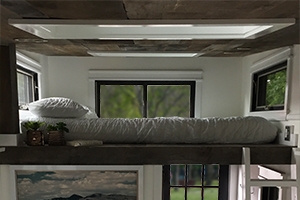
Tiny houses’ utility bills are less.
Tiny houses are smaller than traditional houses, which means less space to heat or cool. Because they’re on wheels, we never know where they’ll end up, so we build our tiny houses to withstand any climate in the continental United States. Our shop is in a rather extreme climate zone so we understand the need to be warm in the winter and cool in the summer. The tiny houses on wheels we have built have been toasty warm in New Hampshire in negative temperatures as well as nice and cool in the Texas heat. Double-glazed windows, high R-value insulation in the floor, ceiling and walls, and efficient heating and cooling systems used in B&B Tiny Houses make for some pretty tiny utility bills.
If your tiny house design gets big enough, in some cases it can make more sense to just buy a regular house.
B&B Tiny Houses’ longest tiny house is 32′ long (on a 30′ trailer with a small overhang) and our widest tiny houses are 10′ wide (the Kinderhook and the Taconic Park Models). If you’re not planning on moving your tiny house, “large” tiny houses can be a great way to get some extra elbow room. When you start going bigger than 10′ x 30′ though, depending on all the other factors mentioned above it may make more financial sense to just have a traditional permanently-affixed home, park home, or modular home built.
To recap, be sure to consider all of the costs involved with living tiny versus living “large”: not just the cost of the houses themselves.
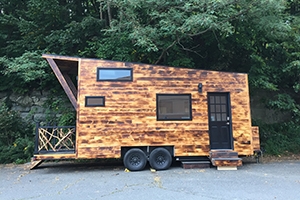
What’s the Best Size Tiny House for Travel?
/in Lifestyle /by Rick PorcoTiny Houses on Wheels are sized for the road.
An 8 1/2 foot width is standard in tiny houses because that’s the maximum width that can safely travel down roads without an oversize permit. We also build some tiny houses on wheels 10+ feet wide as Park Model RVs and procure oversize permits in every state they’ll travel through to get to their destination. 10+ foot wide houses, of course, aren’t recommended as houses that will travel more than once.
While the length of tiny houses is variable (we’ve built everything from 16 feet to 32 feet) the height is also restricted by the road. 13 1/2 feet tall is the maximum, which means the ceiling can be just over 10 feet from the floor inside the tiny house. That’s why we can’t build a sleeping loft you can stand up in– unless you’re only two feet tall.
What size vehicle do you need to own to tow your tiny house?
You should have a vehicle with a towing capacity that exceeds the weight of your tiny house. This article will help you determine what towing capacity you’ll need based on the estimated weight of your tiny house.
It can be helpful to take lessons first.
If you don’t have experience towing, see if there are classes offered in your area before you set out on the road with your tiny house in tow. If you don’t want to take an entire course, have someone you know who’s experienced in towing give you a few pointers. Having someone watch what you’re doing in-person is more helpful than YouTube videos, because they can tell you what you’re doing wrong and right.
Shorter tiny houses are lighter.
We recommend a house up to 24 feet long for towing. Anything larger (or heavier) gets unwieldy for travel. (We can still build a bigger house if you’re not planning on traveling with it!)
If you don’t want to tow your house, hire a professional.
There are companies that do this all day, every day so you don’t have to. If you’re only moving your house once, it may be best to leave the towing to the pros. If you’re on the east coast, email us at [email protected] for a towing company recommendation.
Where Can I Put My Tiny House? A Near-Comprehensive List Of Tiny House Parking Resources
/in Lifestyle /by Rick PorcoWhere Can I Park My Tiny House?
This is a question we get almost every day. Often, your town won’t have already considered whether to allow tiny houses as year-round residences: it just takes someone to ask.
Start out by looking at the zoning laws in your own town. B&B Tiny Houses are built to RVIA standards, which legally classifies them as RVs. If your town or city doesn’t allow RVs, then you can either ask your planning board or go to another town.
Networking is a common way people find spaces for their tiny houses: start out on Facebook, Meetup, or in person at a tiny house festival. By using personal networking rather than tiny house websites, you might find someone with land willing to rent a space to you who hasn’t previously heard about tiny houses or considered renting a small piece of their land for one. Try Facebook Groups that are tiny house specific, or just general community groups. Before agreeing to rent someone’s land, though, make sure both you and the potential landlord are aware of the tiny house legalities in that community.
Countrywide Resources on How To Find Legal Tiny House Parking
Search Tiny House Villages: RV Parks, villages, and communities across the United States and Canada that allow tiny houses.
Try It Tiny: Short-term and long-term rental lots, often on privately owned property, for your tiny house as well as tiny houses for rent.
State and Region-Specific Tiny House Networking
This list was updated in April 2019 by adding new groups, deleting now-defunct groups, and improving formatting. Did we miss anything? Let us know via email: [email protected].
What’s The Difference Between a Modular Home and a Tiny House on Wheels?
/in Lifestyle /by Rick Porco
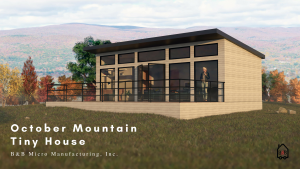
Left: A Tiny House on Wheels- the wheels are obscured by shrubbery. Right: A Modular Home: no wheels, slab foundation (coming soon!)
Tiny Houses on Wheels
Tiny houses on wheels are permanently on the chassis. The tires can be removed but the house will always be on the trailer. If you want a tiny house on wheels but don’t plan to travel with it, we can also permanently anchor a tiny house on wheels to the ground, remove its tires, and skirt it. Road-legal limits of 8 1/2′ wide and 13 1/2′ high constrain the size of tiny houses on wheels. We are certified to build tiny houses on wheels by the RVIA, so our tiny houses on wheels are legally considered RVs. Tiny houses on wheels don’t require a building permit, but you’ll need to make sure RVs are allowed in your zone of your town.
Modular Homes
Modular homes are constructed in pieces in a factory and then transported to the home site to be assembled and attached to the foundation. They look just like traditional houses– you can’t tell the difference between a modular home from a traditional home just by looking at it– and can be any shape and size as long as each module is small enough to travel from the factory to the build site. After a modular home is built and inspected inside the factory, it is transported to the site and then permanently attached to a foundation (basement, slab, or pin foundation) where it is inspected again. B&B Micro Manufacturing is certified to build Industrialized/Modular Homes by the State of Massachusetts. Modular homes are financed using traditional home financing and there’s no difference in zoning for a modular home versus a traditional site-built home. B&B Modular designs will be released soon.
Both types of homes are built inside our factory in Massachusetts. The advantages of factory-building include a quicker build time (we don’t have to stop working in extreme weather) and a less expensive build, especially when the home is built alongside other homes of the same design.
Why Tiny Houses Can Be for Almost Anyone
/in Lifestyle /by Rick PorcoWho should own a tiny house?
Tiny houses have risen in popularity over the years, and there’s a good reason for this: tiny houses offer many perks that will appeal to almost anyone. Tiny houses are economical, sustainable, and can even be a great investment or supplementary source of income.
Baby Boomers
We’ve had baby boomers choose the tiny house lifestyle for a multitude of reasons. Some want a big change in their life, want a simpler life, or want to travel more. Also, we have had baby boomers choose to live in a tiny house and rent out their traditional house for additional income.
Millennials
With educational loans and rent costs rising, many millennials are delaying buying a house–only 20 percent of millennials have a mortgage. In addition, many millennials find the pros of living more sustainable and minimalistic very desirable. Tiny houses allow millennials to put money that would otherwise be going down the drain towards an investment that they can get back.
Those Wanting a Simpler and more Environmentally Conscious Life
If you’re looking for a change in your life and yearn to get away from all hecticness that overconsumption can bring, the tiny house lifestyle may be the solution you’ve been seeking. The minimalistic lifestyle is about owning the perfect amount and focusing on your needs and talents in order to become the happiest version of yourself. Because space is a commodity in a tiny house, it makes you to only keep and buy what will add value to your life. Read more about minimalism here.
On and off-grid options allow tiny house owners to reduce their carbon footprint–a net zero carbon footprint is possible in off-grid living. Tiny houses require less materials to build and use significantly less water, heating, and cooling because of their size. In addition, their size limits the amount of waste produced. Check out these two blogs to learn more about simple living and off-grid living.
Families
Families that decide to go tiny may use the house for vacations or live in it full time. Although living with your family in a tiny house will undeniably bring its own challenges, the benefits of living in a tiny house are immeasurable. Teaching your kids about the importance of memories and family are just a few! Read about this five person family that decided to go tiny full time.
Families Looking for Flexible and Accessible Housing
Families with aging parents or those that want to provide their older children with special needs an increased sense of independence can turn to tiny houses. Nursing homes cost an average of $235 daily for a shared room, which is a hefty sum for most families. Our tiny houses can be built to ADA standards and are a much cheaper option. Additionally, the tiny houses can be placed and hooked up to your utility grid–allowing you to be walking distance away from the tiny house (as long as you ensure your town allows tiny houses).
Anyone on the Move or Looking for Weekend Getaways
Because many tiny houses are on wheels–ours at B&B are on wheels and RVIA certified–tiny houses can go wherever you travel. If you’re a person that loves to travel or are looking for a weekend getaway to go hiking, skiing, or otherwise enjoy yourself and save money by opting out of an expensive hotel, then a tiny house is a perfect fit for you. Whether you decide to build your tiny house on or off-grid, you will have many places to keep your tiny house; the amount of places you can keep your tiny house off grid are endless and in most places you can stay in your on-grid tiny house wherever a RV or trailer is allowed.
Developers, Renters, Campgrounds, and Hoteliers
Developers have started investing in tiny house campgrounds and hotels. These sites offer guests a unique way to travel and experience their surroundings. Check out these tiny house hotels across the United States.In addition, tiny house owners can rent out their tiny house on sites like AirBnB when they are not using it. Read our blog post on turning your tiny house into an investment. Tiny houses provide a great business venture for those that wish to embark.
Want to stay up to date on tiny house news? Fill out our form below.
How To Get Started
Learn more about our process or fill out the form below and one of our tiny house experts will reach out to you.
